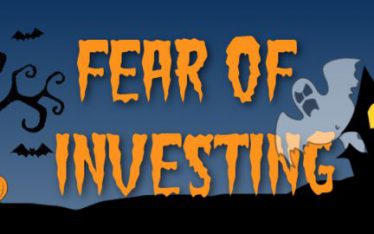A summertime reflection on active and hedge fund investing, especially on the back of recent headlines covering large institutional investors exiting the hedge fund space, in addition to the investor narrative regarding fees and performance.
While I have often made the case for passive investing, so I can understand the exit announcements, but have also witnessed firsthand the value active management can bring.
Most investors have two dominant objectives for introducing active strategies in their portfolio: Return and Diversification potential. So, who are the investors who make up $3 trillion HF investing community?
Investors in the bottom left quadrant have been transient in this space, and success is infrequent and often follows luck. The most successful and sophisticated investors have attained both objectives in arriving at uncorrelated high quality return streams.
This success isn’t easy, and each investment choice requires balanced focus in four key areas, and a touch of luck: asset allocation, manager selection, execution, and monitoring.
As we discuss the life cycle approach, we draw inspiration from summertime fruit platter.
Asset Allocation: What fruits are good for you
Not all fruits are beneficial at all times for everyone. If you have diabetes, avoid fruits containing fructose. If you are dehydrated, load up on watermelons. An apple a day, keeps the doctor away.
Similarly for investors, the allocation strategy selection depends on their particular funding goals, liquidity needs, and risk tolerance. There is abundance of literature on this phase of investing.
Manager Selection: How to select the best fruit?
In the same way that selecting good fruit is conducive to good dining, picking the right investment manager is very important. If we eat melon out of season, it might not be as tasty.
Nature has a way of eliminating fruits that are out of season. Unfortunately, fund management companies cannot switch off or on so readily, so understanding the manager skills and the markets they operate in is very important, and equally difficult.
Execution: Watermelon vs. Pineapple
Not all fruits can be consumed the same way. A banana needs to be peeled; a coconut needs to be pierced. In the same way, investors need to choose how to deploy a strategy, direct, via a fund of funds vehicle, or as managed account.
Taking it up a level, select cultures build relationship with a fruit. Watermelon pulp is often eaten or juiced. Watermelon rinds can be pickled, stir-fried and stewed. The seeds are toasted and salted.
Similar effort and commitment characterize the relationship some of the most successful asset managers have developed with savvy institutional investors (our aspirational investors).
On the other hand, in our fruit analogy, you cannot eat the peel of a pineapple. If you tried, it would end in gastric distress. So, it’s crucial to know which fruit (and in our case asset manager) you can have full relationship with.
Monitoring: Influencing the fruit operation
The most successful investors have a relationship of trust and confidence with their asset manager. For example, there is a long chain of trust that eventually lands the fruit on our platter, spanning operations of fruit growing, harvesting, and more. If we are disappointed with the quality of the fruit, we vote with our feet.
In the investing world, monitoring means trust, but verify. And this verification has taken a form of extensive information exchange all the way to portfolio holdings. The current approach is often reactive and doesn’t necessarily guarantee elimination of blowup. An alternate approach of rewarding internal controls and governance is proactive and preventative one.
Overall, investing is complex and requires commitment of investment in people and technology. Not all investors have this capability, so they might select replication strategies. Similarly, those who do not have a fruit platter with ripe juicy citrus fruit may have to settle for a Vitamin C supplement. It provides some of the benefits, but not the full experience.
Cost of Active Investing
Regardless of which box the investor belongs in, price is an important consideration. If we want a fruit that is not available in our country (Kesar mangoes from India), it’s expensive. Similarly, certain funds that have a long track record of consistent performance are in demand and will be expensive. A fruit known to be a delicacy and hard to find is also expensive, like the fig. Similarly, an exotic strategy that is confined to a small investment universe can also command a price premium in the market.
Ways in which investors evaluate the worth, and structure fees.
- Leverage options valuation model to decide on the fees which leverages volatility time series, and forward expectations volatility
- Introduce terms that do not reward underperformance, claw backs and fee escrows, if there is bandwidth to deal with legal complexities
- Offer a step down fee structure as managers mature. The management fee could scale down as assets increases, keeping the manager hungry for performance and curbing the temptation to be an asset gatherer at the expense of performance. A much better alignment of interests.
However, we note it’s easy to propose solutions; the key is the ability to execute on them.
Industry Transforming, and Not Disappearing
Overall, the industry is transforming. Broad based performance has been challenging. Fees are re-calibrating. Asset managers are focused on being more relationship driven rather than product driven. To accommodate changes in the industry, hedge fund managers are building alternative distribution and morphing into being asset managers. Others are joining hands (Entrust/ Permal, 50 South/Aurora, GAM/Cantab) as the industry strengthens following performance shocks, regulatory costs, and changing fee structures.
If we do not like a particular fruit, we do not boycott all fruits on the plate; we just eat around that fruit and enjoy the rest of the platter.
As ever, market forces can be expected to produce innovation and new products and services, some of them ripe and tasty for discerning investors. To paraphrase Mark Twain, reports of the hedge fund industry’s demise are greatly exaggerated.



